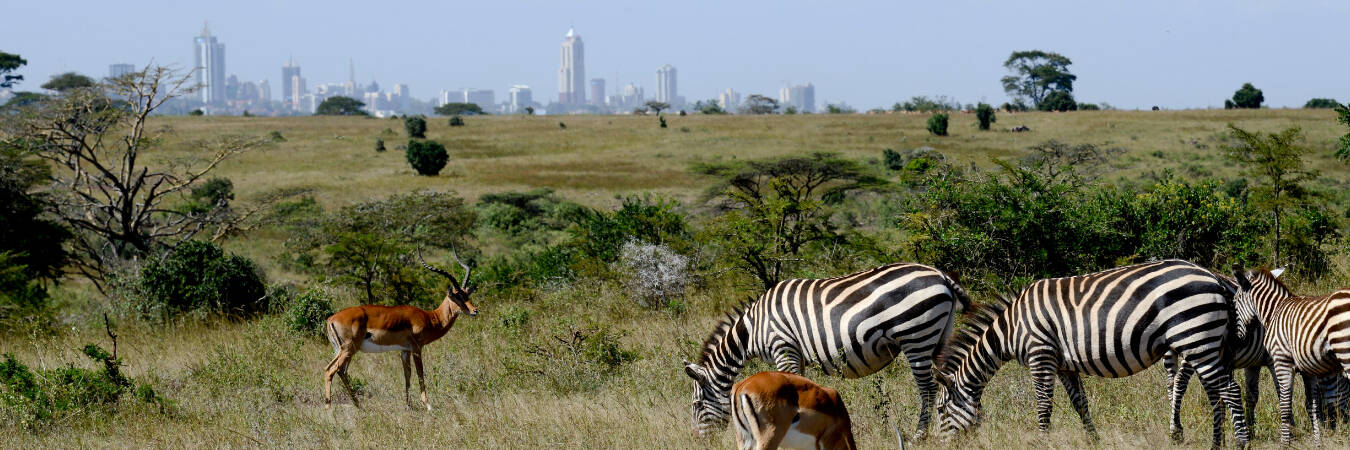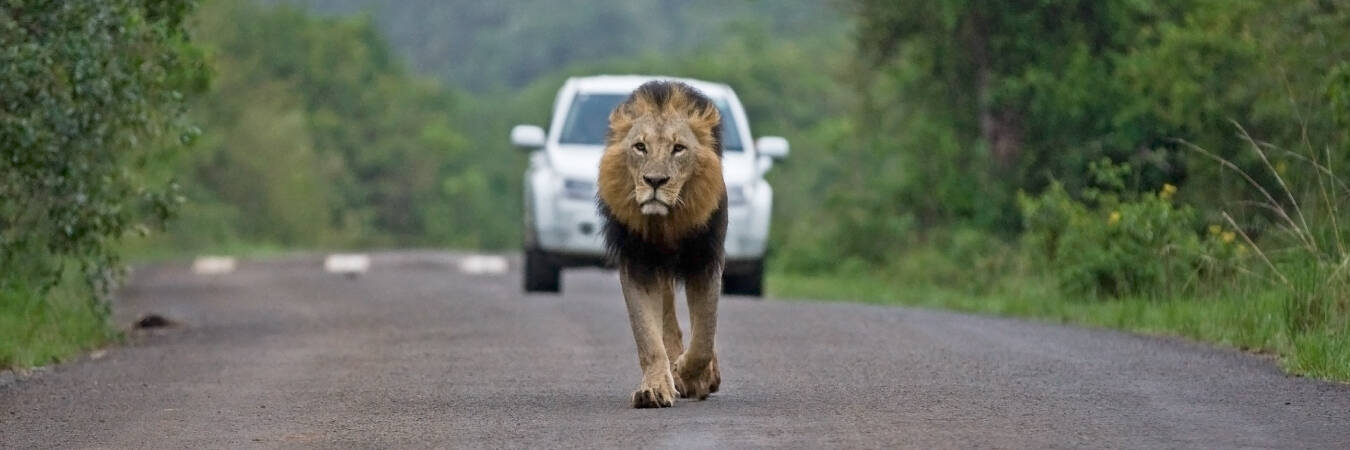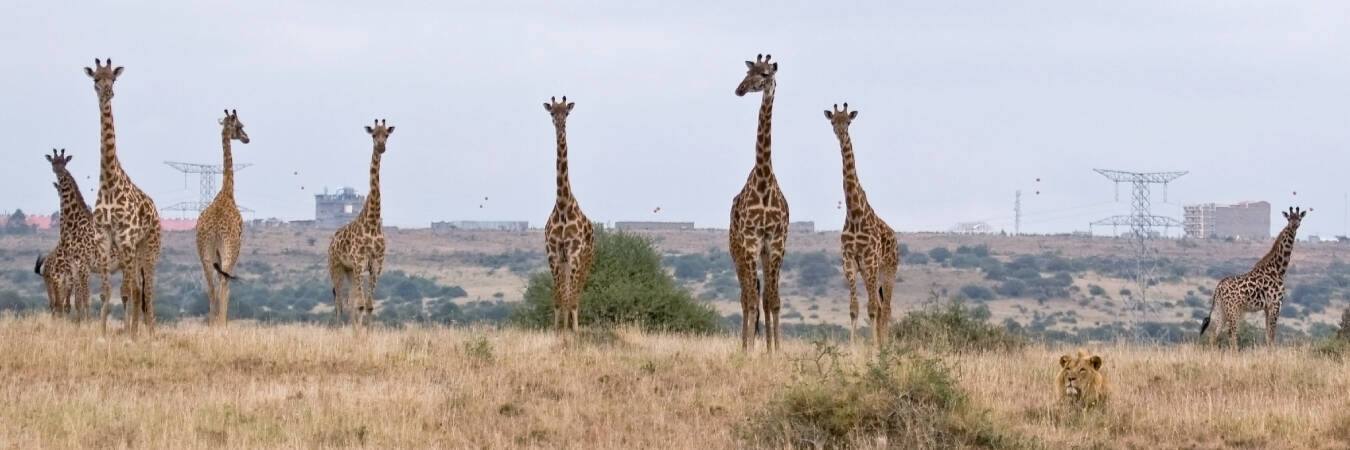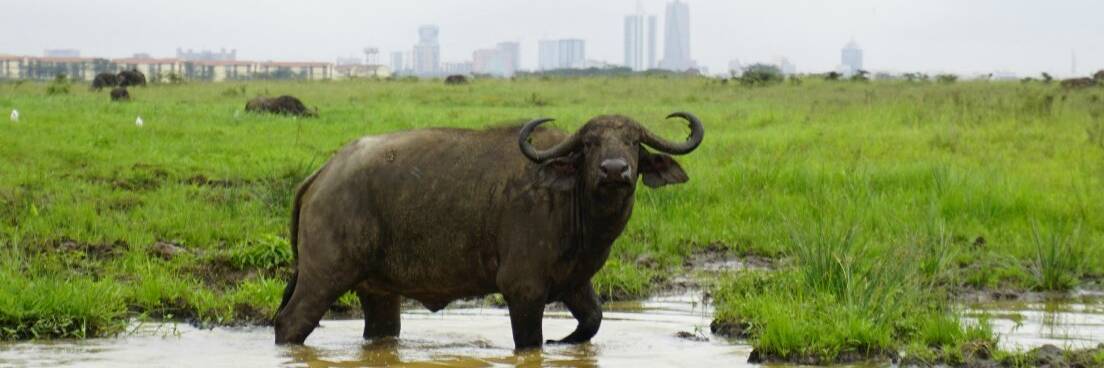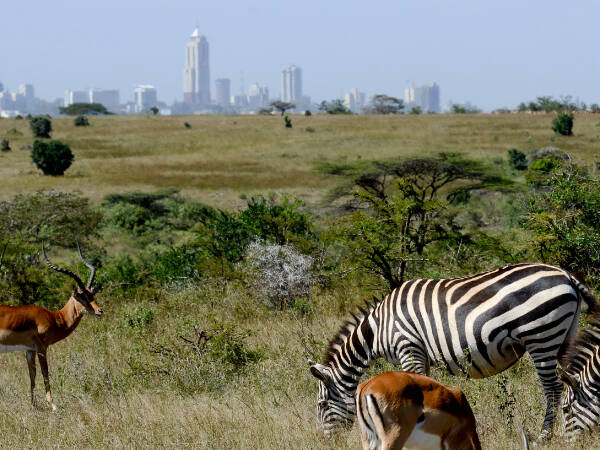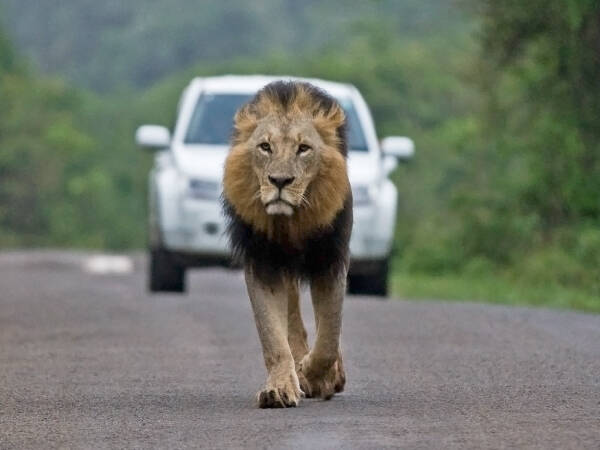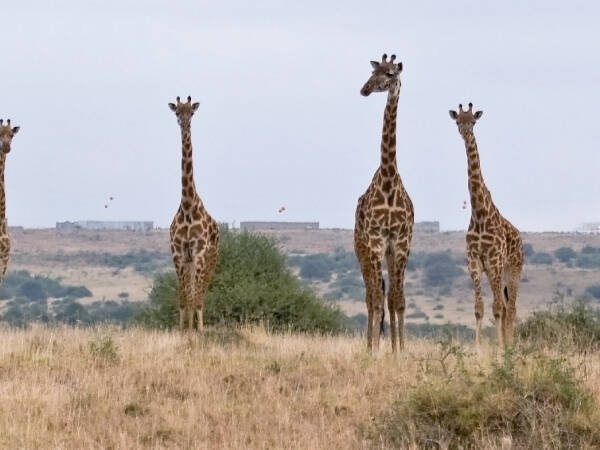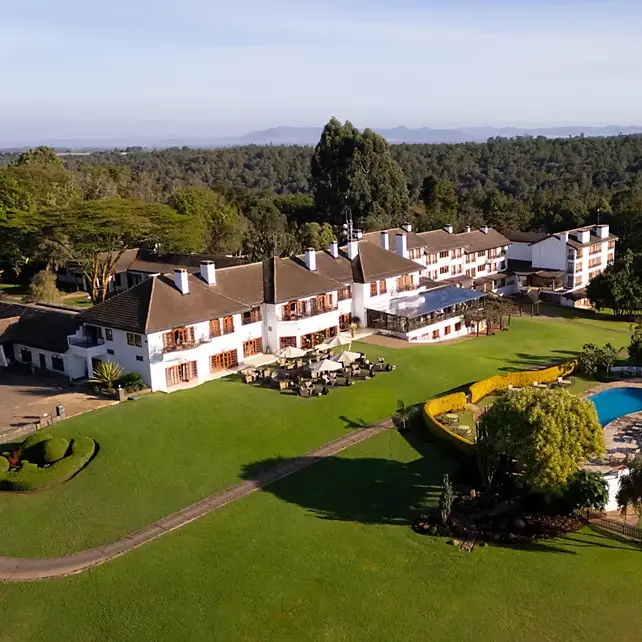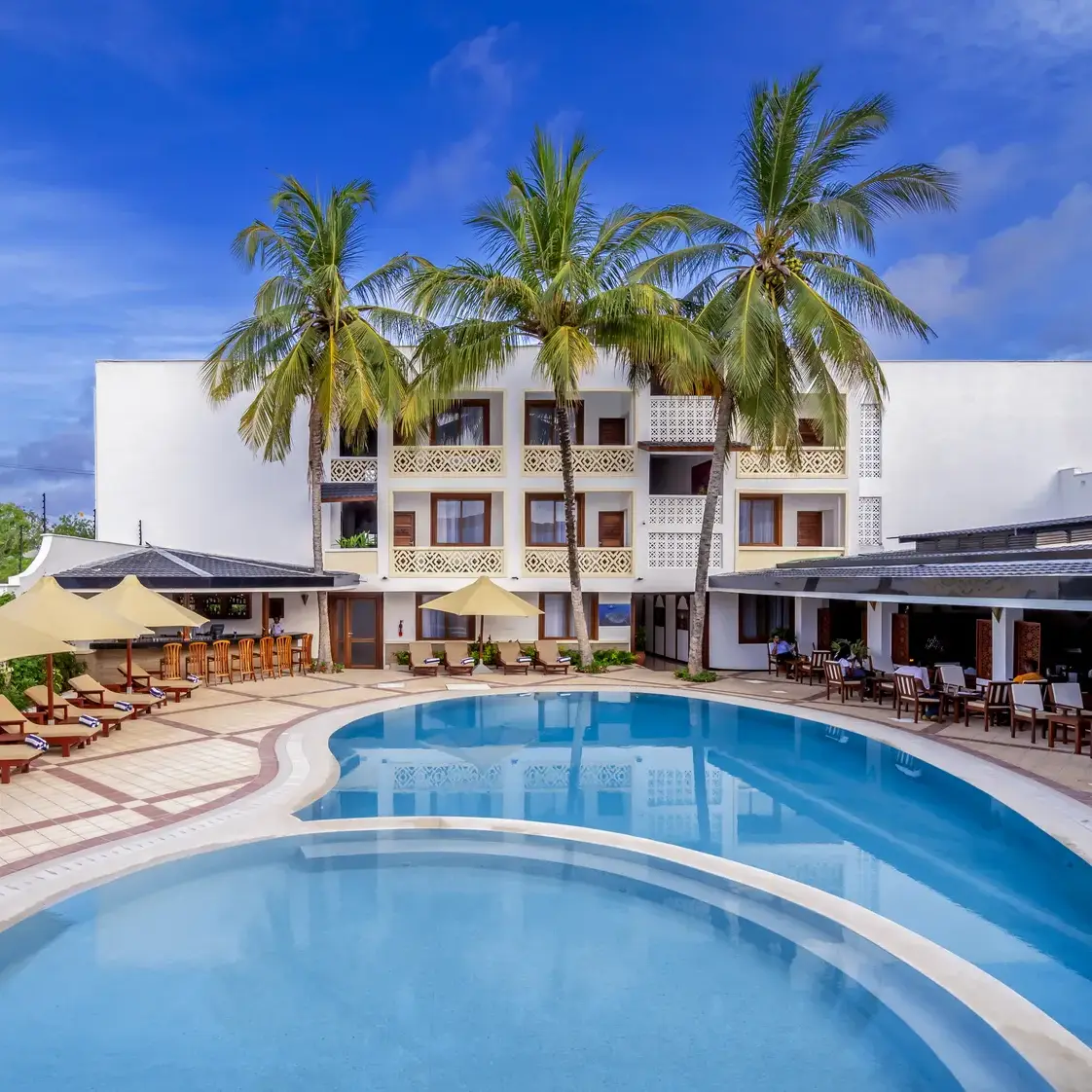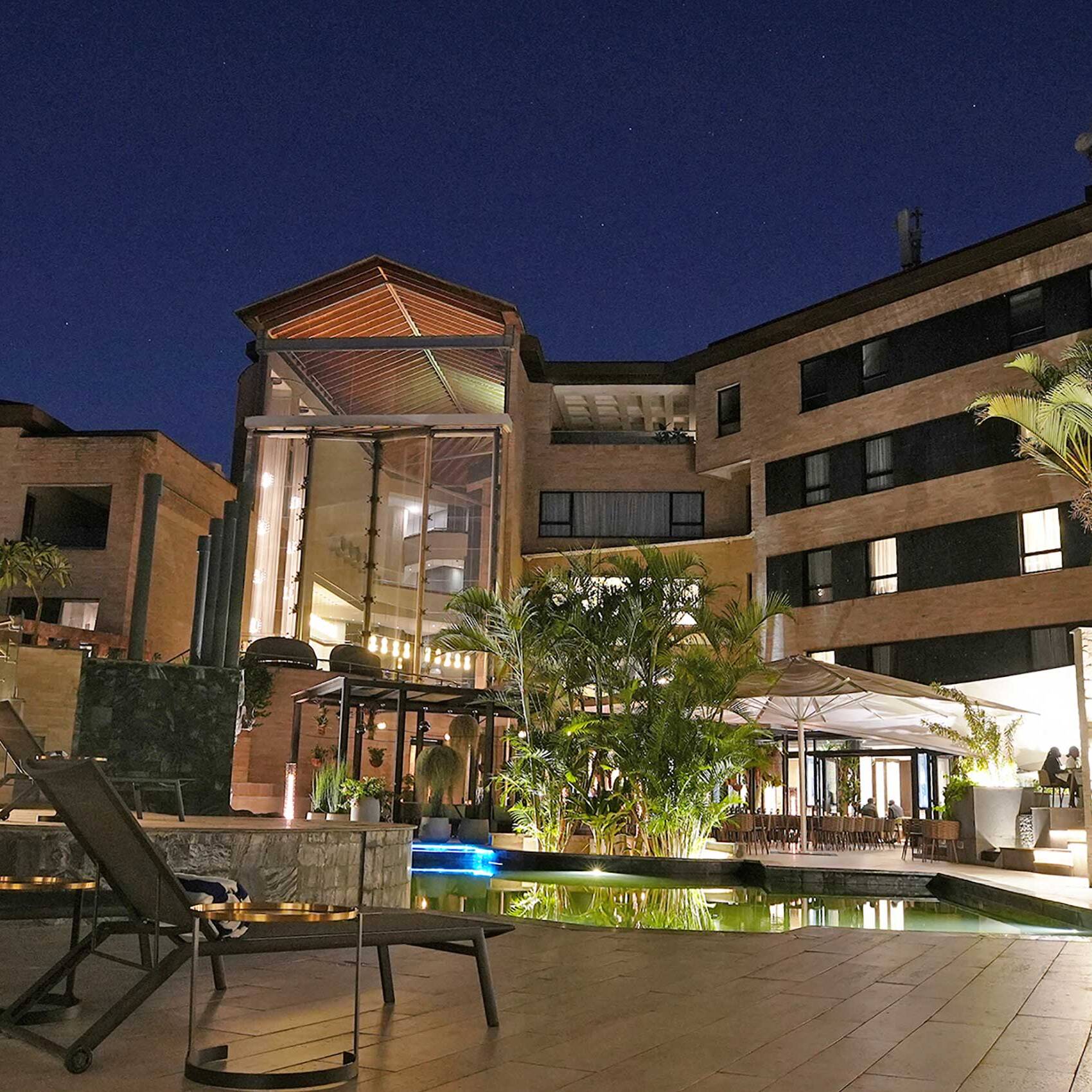Kenya’s inaugural park, Nairobi National Park was officially established in 1946, and covers 117 km² just a mere 7 kilometers from Nairobi’s city center. It is one of the smallest protected areas and, interestingly, despite the size and this urban proximity, the park supports a diverse array of wildlife, with more than 100 mammal species—including lions, leopards, cheetahs, hippos, buffalo, giraffes, zebra, and both black and white rhino—and over 500 bird species, according to Kenya Wildlife Service surveys.
Nairobi presents visitors with a unique juxtaposition of the city skyline on the horizon and the roaming wildlife: giraffes browse thorn trees with skyscrapers visible behind them and buffalo herds churn dust near the Mbagathi River. Early mornings bring opportunities to observe black rhinos grazing and herds of zebra and warthog foraging just on the city’s edge.
The park’s southern boundary enables limited migration of herbivores to the Kitengela plains, though recent development has restricted this movement. Major landmarks include the Ivory Burning Site, a powerful symbol of Kenya’s anti-poaching commitment.
Bush Walks & Photography
Under the guidance of armed rangers, visitors explore designated walking trails near the Hippo Pools and riverbanks, tracking spoor of smaller mammals—dik‑dik, mongoose among others. Early outings to the Dam and wetland pans offer sightings of African skimmer, pel’s fishing owl, and migrant waders.
The city skyline serves as a beautiful backdrop for wildlife portraits. Photographers often concentrate on rhinos, giraffes and zebras against the outlines of Nairobi’s high‑rises or capture cheetahs racing on open plains.
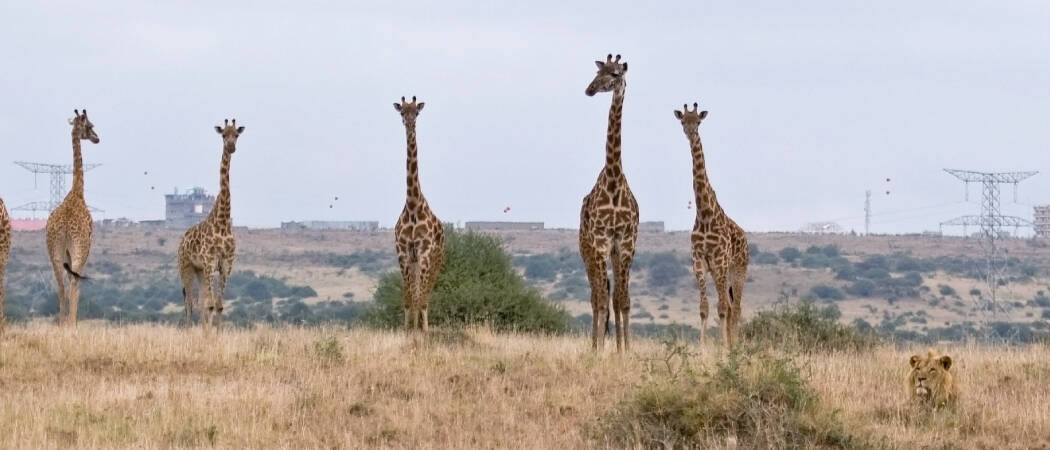
Community & Conservation Visits
On request, visitors can tour the David Sheldrick Wildlife Trust (orphan elephant sanctuary) just outside park boundaries or attend presentations at the Nairobi Safari Walk, engaging with conservation initiatives and rehabilitation efforts.
Game Drives
Departing at dawn and late afternoon, game drives cover the park’s grasslands, riverine forest, and acacia woodlands. Key sights include the Rhino Sanctuary, where armed rangers oversee over 100 black rhinos, and the Hippo Pools, where families of hippos rest in shaded waters at midday.
Nairobi National Park
The park is fenced on three sides, with only the southern border open to allow wildlife migration into the Kitengela plains.
Despite its size, Nairobi National Park has one of the highest densities of black rhinos in East Africa, thanks to intensive management and 24/7 armed patrols.
History: The park was conceptualized by British conservationist Mervyn Cowie, who recognized the need for a wildlife sanctuary adjacent to the growing city.
Uniqueness: It is one of the only national parks in the world where a major urban skyline forms part of the safari backdrop.
Plan your visit
Take the first step to plan your trip with us. Our team will take the rest.

